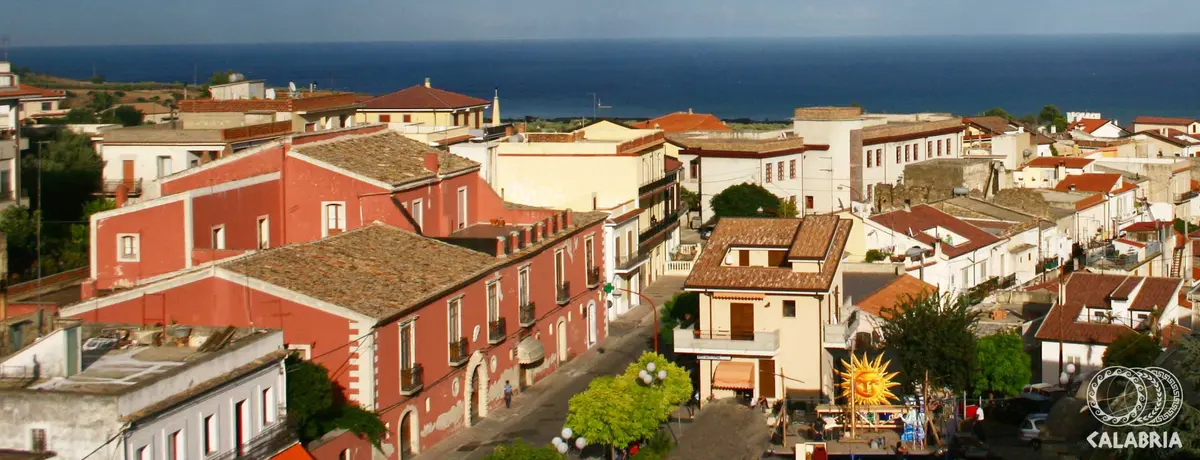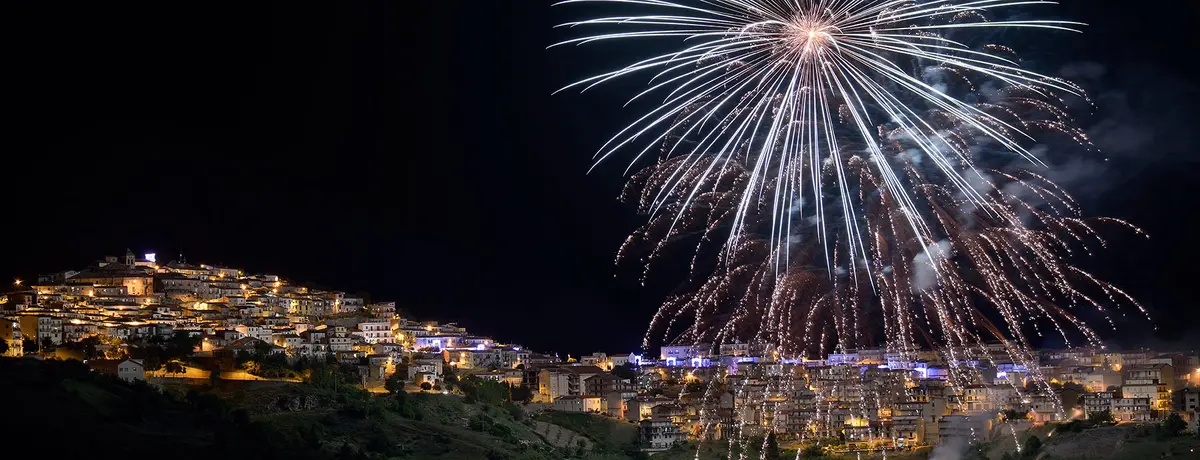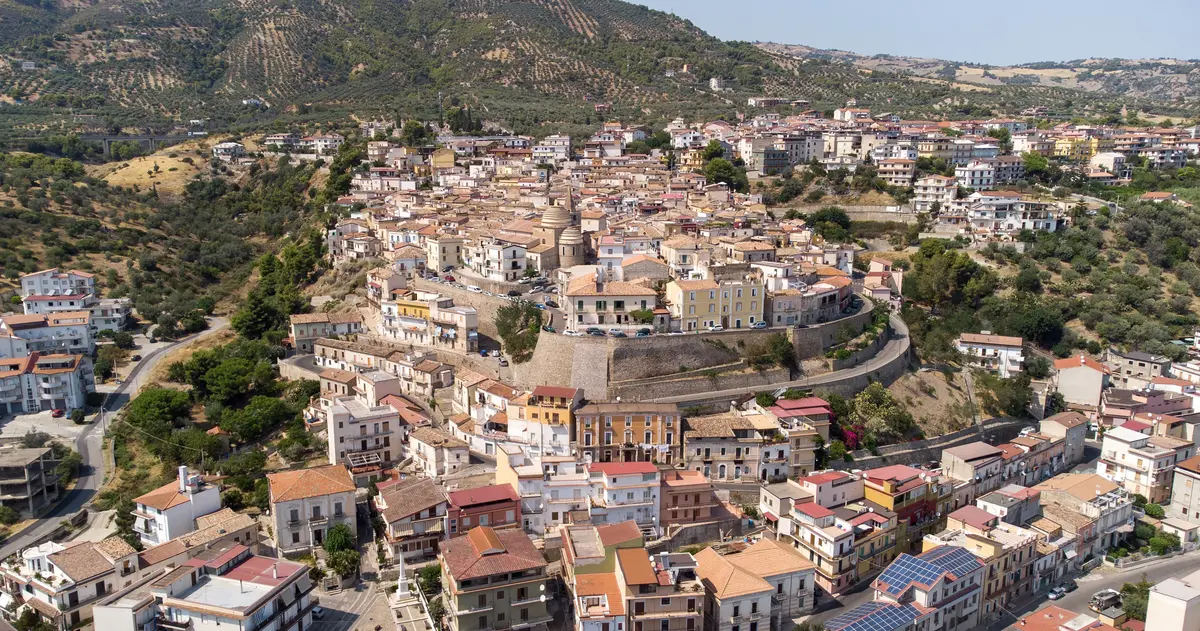Amendolara
Amendolara, the land of almonds

Sea
Amendolara is situated on a succession of plains that slope towards the sea in an area full of archaeological evidence between the Roseto Capo Spulico marina and Trebisacce in the province of Cosenza.
The name of this very old centre probably derives from the Greek Amygdalaria (almond groves), often defined the land of almonds because of the notable almond production.
In terms of quality of hospitality, Amendolara ranks first in the Province of Cosenza and in second place in Calabria.
A legend tells that Epeius, the famous builder of the Trojan Horse, was caught in a storm near to the Italian coast after destruction of the horse and he promised the goddess Athena that he would build a town dedicated to her at the place where he landed safe and sound. His request was granted and so Epeius built the town, calling it Lagaria, which subsequently became Amendolara.
In the area of the current Masseria Lista, finds of the remains of a system of tanks for water supply have been made, evidence that, in Roman times, there was a post house on the coastal road that was probably called Statio ad Vicesimum. The Cappella dell’Annunziata or Cappella dei Greci (The Annunziata Chapel or Greeks’ Chapel) is not far from the large Roman tank. The little church, built on a pagan temple in the Byzantine era, has a Byzantine-type layout and cupola, and it’s presumed that it was a meeting place for the hermits of the neighbouring caves. It contains frescoes depicting a Madonna with Child and a Christ Pantocrator blessing and many Byzantine-mediaeval symbols. The Byzantine churches of S. Giovanni, S. Sebastiano, S. Marco, Santa Maria and S. Giuseppe are opposite the Annunziata and overlook each other from their respective, neighbouring, hills. The Amendolara area is studded with churches, like the mother church of Santa Margherita Vergine e Martire which has traces of the mediaeval period such as the stone doorway, the round arches and stone font with lions at the foot of the columns. There are many palaces of noble families in the old centre - Palazzo Andreassi, Palazzo Melazzi, the Palazziata, Palazzo Pucci di Amendolara and Palazzo Grisolia, all admirable examples of the different architectural styles that have followed each other in Amendolara over the centuries. Unlike many other Calabrian areas, which have already acquired a tourist tradition, Amendolara has only experienced a certain tourist development, with the opening of hotels, meeting places, play areas for children and the revaluation of the old centre and seafront, in recent years. The qualitative leap at tourist level came with the promotion from 1 to 2 sails in the Legambiente Blue Guide of 2006. Amendolara tops the list for quality of reception services in the province of Cosenza and is at second place in Calabria. In 2011 and 2012, Amendolara received the Blue Flag.
The Secca di Amendolara
The shoal, about 12 miles from Amendolara Marina, is just 20 metres deep. It is quite large and it may correspond to the remains of an old island, which probably submerged due to erosion, as shown by some old papers that talk of an islet, called Monte Sardo. A legend and some recent research suggest that Monte Sardo, which sank centuries ago, was the island of Ogigia where, according to Homer’s Odyssey, the nymph Calypso detained Ulysses.
The Castle
The castle was built between the 8th and 9th centuries on the ruins of a Langobard fortress but has been extensively altered over the centuries; however, it can be considered as having Norman origins because of its triangular layout and polygonal tower. In 1239, it was restored by Frederic II of Swabia, becoming the most important ‘Domus Imperialis’ in the area between Calabria and Puglia. It later became home to the Angevins and then many noble families. Today, we can see the masonry access bridge, which replaces the drawbridge, the moat, polygonal tower and Aragonese colonnade. The remaining parts of the walls and the other towers were incorporated into private houses and some are still visible. The entrance to the castle gives onto a large space from which access is gained, via a staircase, to the rooms on the first floor and a long, panoramic Aragonese-type colonnade. There’s a door in the open space, before the staircase, which accesses what must have been the chapel of the investitures, decorated by frescoes such as the late 13th century one of a Neapolitan school, depicting a crucifixion with St John and the Madonna while the blessing Pantocrator is depicted on an almond supported by two angels. Currently, after some restoration work carried out by private persons with the backing of the Superintendency for Monuments of Calabria, the old manor house hosts a restaurant staged in Norman style while there is an interesting panorama which includes the Straface wood, the related river of the same name and, in the distance, Castroregio, the town of the descendants of the Albanians who emigrated to Italy in 1500, from the large space accessed immediately after crossing the main entrance. The enchanting view terminates with that of the downward sloping Serra del Dolcedorme at the foot of the Pollino.
Torre Spaccata
A coastal tower built by Fabrizio Pignatelli, Prince of Cerchiara and Lord of Amendolara, in 1517 to look out for Saracen pirate ships arriving from the sea. When the enemy was seen, the danger was reported to Roseto castle and Albidona tower. After a partial collapse, the tower was restored a few years ago.
Archaeological museum
The Amendolara Archaeological Museum, set up in 1992, is dedicated to Mr Laviola, a researcher and antiquities enthusiast, committed to safeguarding the historical and archaeological heritage of his place of origin. The Laviola collection mainly consists of metal finds and ceramic fragments of the proto-historic period (12th-8th centuries BC). The central nucleus is enriched by finds from digs made at the end of the 1960s by Juliette de la Genière which brought to light burial sites in the Paladino and Mangosa areas. The path in the museum winds through the various stages of habitation of the site, from the indigenous civilisation of the Bronze Age to the arrival of the Greeks.
Religious festivals
Religious festivals in Amendolara start in the third week of the year when there are the celebrations of Sant'Antonio Abate on the third Sunday. The ‘incanto’, an auction of votive products for the saint, is organised at this time and the proceeds remain in the parish. The auction of orange wreaths is special and the devotees of the saint vie with each other to the sound of Euros. The ritual procession is in the afternoon followed by the horse race and the Palio degli Asinelli (Donkey Palio).On 24 March, there is the celebration for the Madonna dell'Annunziata, which takes place in the chapel of the same name. The festival is held in the evening when a group of devotees with torches meet with the long line of candles that starts from the centre of the village to meet in front of the Chapel dell'Annunziata. The patron saint, San Vincenzo Ferreri, is celebrated on the last Friday and Saturday in April. ‘Fucarazzi’, large bonfires, are lit in all parts of the old centre and the one with the highest flames is given a prize.
Wine and food
The food tradition is a strong tourist and cultural attraction for Amendolara. The cuisine is simple, genuine and is best expressed in the use of vegetables from the surrounding countryside. The first courses par excellence are the ‘rascjcatilli’, fresh pasta made with flour and water and shaped into small pieces hollowed out with a finger and served with a fresh tomato and basil sauce or a lamb ragout and a dusting of local hot chilli pepper. The ‘ferrazuoli’, small sticks fresh pasta hollowed out by a slender square metal form, served with a southern meat ragout are also exquisite. Both are dishes from the peasant tradition, often enriched by the intense flavour of mature ricotta flaked directly onto the plate at the time of serving. The most traditional Christmas cakes and sweets are the ‘crispi’, large rings that can be tasted with icing sugar, made of wheat flour, water and yeast, and the ‘cannaricoli’, large gnocchi made of flour, black pepper, wine and a little yeast, and fried in olive oil. At Easter, a common custom is the preparation of ‘cullure’, Easter bread whose original meaning was new life, and ‘pastizzi’, similar to calzoni (like a folded pizza) and made with flour, lard, salt and pepper with a filling of meat and kid’s offal, seasoned with pepper, parsley and garlic and browned in olive oil with a sausage added.
No result









